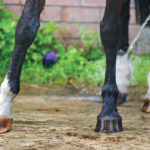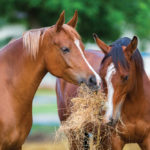
Tag Archives veterinarian

Ringbone in horses
Horse Health: Abnormal and repetitive stresses are frequent causes of this source of lameness

Beef 911: We all need to be ever vigilant when it comes to rabies
This fatal disease is very rare, but always be on the lookout for telltale signs

Coccidiosis affecting young calves in North Dakota
Cattle producers in North Dakota have been losing young calves to coccidiosis this spring, an intestinal disease that affects several animal species

Ergot continues to cause concerns
Feed manufacturers must sell a safe product, but are under no obligation to test for ergot alkaloids

Beef 911: Easy treatments for young calves?
Modern treatments can minimize stress and handling of calves

NDSU Extension offers tips on controlling lice in cattle
The problem has been an ongoing issue this winter for your ranching neighbours to the south

Beef 911: Vaccinating young calves
More vaccines are happening earlier and while performing other procedures

Bad habit or coping?
Horse Health: Coping behaviour isn’t a problem to fix, it’s a sign to look for the root issue

The importance of feeding salt to horses
Horse Health: A horse’s behaviour is the best sign of a salt deficiency, rather than subtle and non-specific symptoms
Beef 911: We need to do better when it comes to castration
Doing it early and properly brings benefits to the producers, addresses animal welfare concerns, and prevents problems later on


